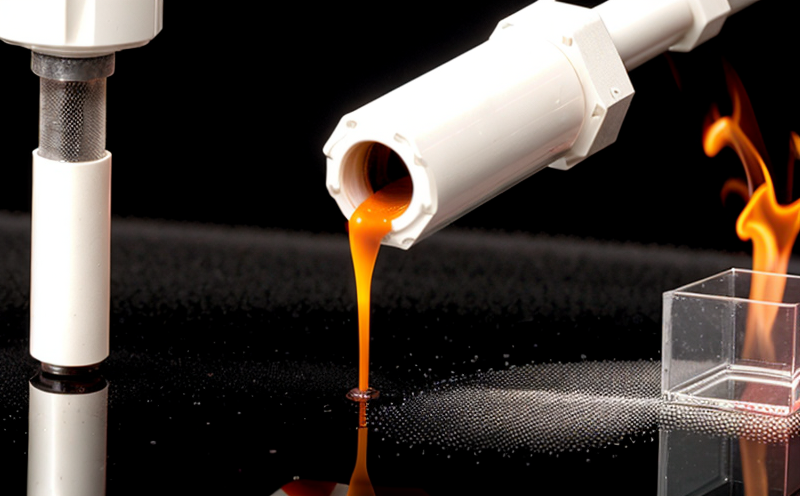EN 15779 Weathering Resistance of Nanomaterial Surfaces
The European Standard
The standard applies to various types of nanomaterials such as nanoparticles, nanostructured coatings, and composite materials with a nanoscale component. The focus is on evaluating the impact of environmental factors like light, humidity, temperature fluctuations, and atmospheric pollutants on the integrity and chemical composition of these surfaces. This information is vital for industries ranging from electronics to pharmaceuticals, where nanomaterials play critical roles.
The testing procedure described in EN 15779 involves exposing nanomaterial samples to controlled environmental conditions designed to simulate real-world weathering effects. The exposure typically includes a combination of ultraviolet light (UV), water vapor, and temperature cycling, which are key factors that can lead to degradation over time.
Specimen preparation is an essential step in this process. Samples should be representative of the actual nanomaterials intended for use, with appropriate dimensions ensuring accurate testing results. Preparing specimens involves cleaning them thoroughly, drying them under controlled conditions, and marking them if necessary for post-exposure analysis.
The instrumentation used during the test includes specialized environmental chambers capable of simulating different weathering environments. These chambers can control temperature, humidity levels, UV radiation intensity, and exposure duration precisely to mimic natural weathering processes accurately.
After exposing the samples to these conditions for a specified period (which depends on the specific requirements set by EN 15779), they are carefully examined using various analytical techniques such as Scanning Electron Microscopy (SEM), Fourier Transform Infrared Spectroscopy (FTIR), and X-ray Diffraction (XRD). These methods help determine whether there has been any change in morphology, chemical composition, or physical properties due to the weathering process.
The results from these tests provide valuable insights into how well nanomaterials can withstand environmental stresses without compromising their intended functions. Compliance with this standard ensures that products containing nanomaterials meet safety standards and perform reliably throughout their lifecycle.
Understanding the behavior of nanomaterial surfaces under weathering conditions is particularly important given increasing concerns about potential impacts on ecosystems if nanoparticles are released into the environment. By ensuring that these materials maintain their stability over time, manufacturers can contribute positively to sustainable development goals while also protecting public health and safety.
Why It Matters
The integrity of nanomaterial surfaces is critical for numerous applications across various sectors. For instance, in the electronics industry, maintaining the stability of nanostructured coatings ensures reliable performance and longevity of electronic devices. In medical applications, preserving the chemical composition of nanoparticles is essential for effective drug delivery systems or biocompatible implants.
Failure to properly assess weathering resistance could lead to premature degradation of nanomaterials, resulting in reduced product lifespan, increased production costs due to frequent replacements, and potential environmental hazards if broken-down materials enter water bodies or soil. Ensuring compliance with EN 15779 helps avoid these pitfalls by providing a robust framework for evaluating nanomaterial durability.
Additionally, meeting regulatory requirements imposed by standards like EN 15779 demonstrates commitment to quality and safety, enhancing brand reputation among consumers who increasingly demand eco-friendly products. It also facilitates smoother entry into international markets where adherence to global standards is often mandatory.
Benefits
- Increased Product Lifespan: By identifying potential degradation issues early through thorough testing, manufacturers can enhance the durability of their products containing nanomaterials.
- Better Compliance: Adherence to EN 15779 ensures that products meet stringent regulatory standards, thereby avoiding costly penalties and legal disputes.
- Enhanced Safety: Ensuring stability under weathering conditions reduces the risk of harmful nanoparticles being released into the environment or causing harm if ingested or inhaled.
- Competitive Advantage: Demonstrating a commitment to excellence through rigorous testing can set companies apart from competitors, attracting more customers and fostering long-term relationships.
Customer Impact and Satisfaction
The successful completion of EN 15779 testing not only meets regulatory requirements but also enhances customer trust. Consumers today are increasingly aware of the environmental impact of products they purchase, making it essential for businesses to demonstrate their commitment to sustainability.
By ensuring that nanomaterials used in their products maintain their integrity and performance over time, companies can satisfy both regulatory bodies and consumers alike. This dual satisfaction translates into increased customer loyalty and positive word-of-mouth, which are crucial factors in long-term business success.





